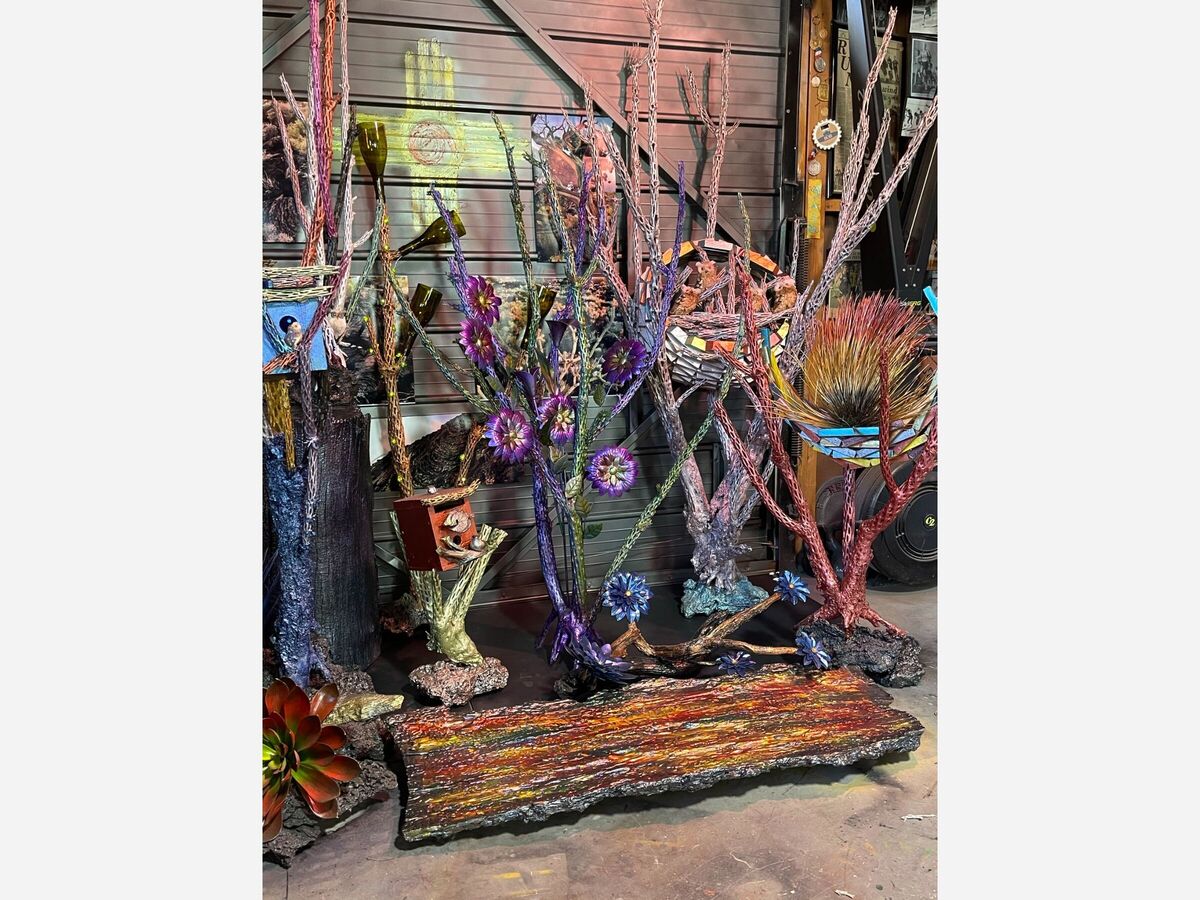Image


Cholla Desert Cactus Art or Cholla Art is a lost artform practiced by few modern artist worldwide any longer. The Artform dates back from early man whom used to stain the cactus skeletons with the juice of berries and use them for decorative gifts to women of the tribes. The larger more intricate sculptures were believed spiritual and added to the vitality of the tribe.
Cholla cactus represent more than 20 species of the Opuntia genus (Family Cactacea) in the North American deserts. Cholla is a term applied to various shrubby cacti of this genus with cylindrical stems composed of segmented joints. These stems are actually modified branches that serve several functions -- water storage, photosynthesis and flower production.
Like most cactus, chollas have tubercles -- small, wart-like projections on the stems -- from which sharp spines -- actually modified leaves -- grow. But chollas are the only cactus with papery sheaths covering their spines. These sheaths are often bright and colorful, providing the cactus with its distinctive appearance.
Prickly pears are also members of the Opuntia genus, but their branches are manifested as pads rather than cylindrical joints. Opuntia are unique because of their clusters of fine, tiny, barbed spines called glochids. Found just above the cluster of regular spines, glochids are yellow or red in color and detach easily from the pads or stems. Glochids are often difficult to see and more difficult to remove, once lodged in the skin.
Cholla cacti serve as a source of food and water for many desert animals. The fruit of the Jumping Cholla species is edible for bighorn sheep and deer.
Moreover, Cholla wood is used for bird perches or in vivariums as a substrate for moss or many air plants. They can reach between 5 and 15 feet (1.5-4.5 m) in height. They have succulent stems that store large amounts of water. These stems are modified branches responsible for the photosynthesis, blooming, and fruit-bearing.
Cholla cactus wood is used as bird perches often, the wood skeleton is highly favored for making handcrafted centerpieces and ornamentation for gardens, back patios and center pieces for great rooms, living rooms and conservatories. Larger pieces are used in public art displays and are highly prized and of great value. No two art pieces are the same.
Former NCAA Award Winning Coach, Fitness Specialist, Author and Artist Rene Sepulveda has embraced his Native American roots in rediscovery of the arts of the natural wonders around him.
His reconnection to his ancestral roots has allowed him to rediscover the use of Cholla Cactus wood art, lava rock and tree roots and to craft them into interesting and colorful works of art that are in heavy demand for the collector of Southwestern natural art.
Cholla Desert Cactus Art is highly prized as each is unique in design, size and color. No two pieces are alike as each is a combination of the artistic design from Mother Nature pairing her treasures with the creativity of Rene Sepulveda.
Cholla art or desert art pieces are rare with some unique pieces are found in the Museum of Modern Art, the Guggenheim and a several museums in Europe and the far east. These pieces are prized for their unique forms. Most are more modern pieces with an abstract flair such as those of Artist Rene Sepulveda. Older pieces are highly prized and newer pieces are highly sought-after as few artist in the world work in the medium due to the delicate nature of the forms.
To see some of these unique pieces and to learn more visit Roadrunner Emporium, 2nd Life Boutique, 928 New York Avenue, Alamogordo, New Mexico or visit
https://artistrenesepulveda.com/collections/cholla-desert-art-collection